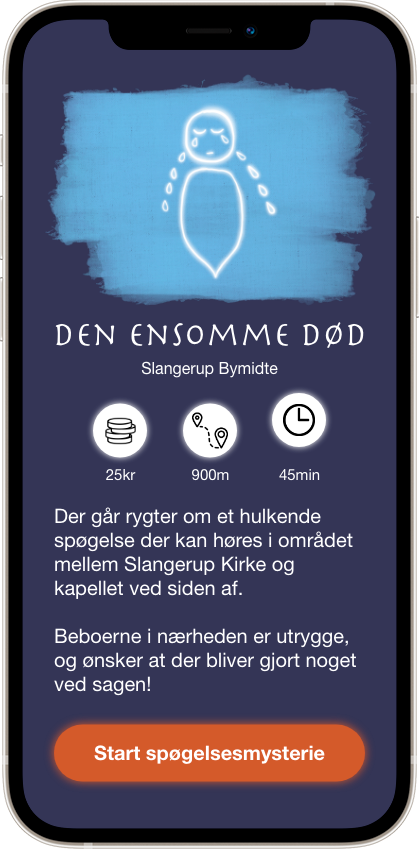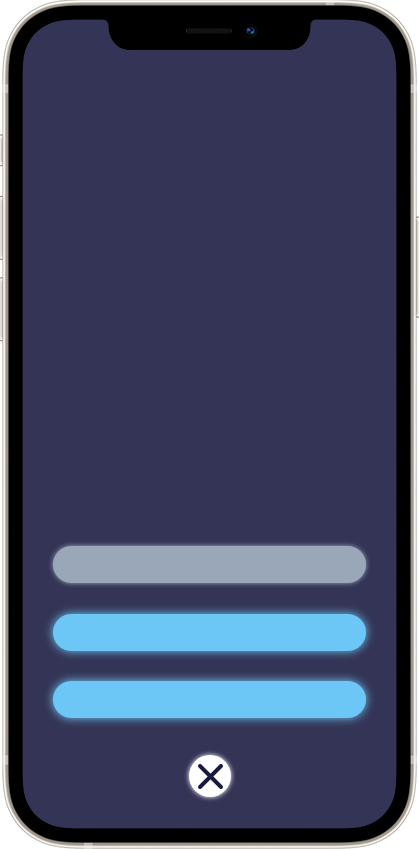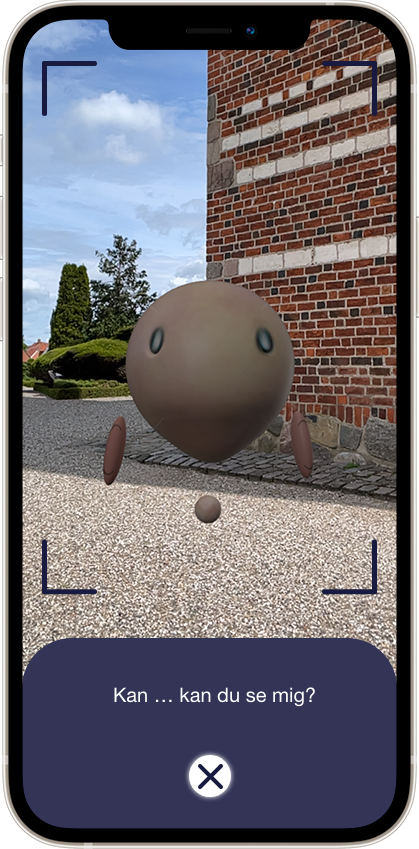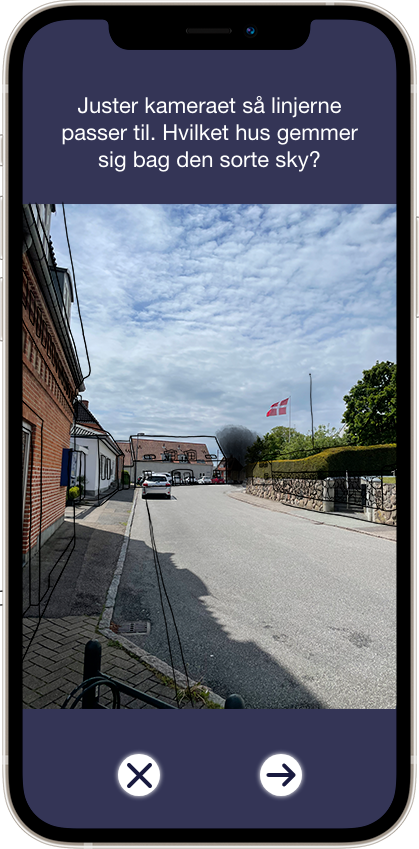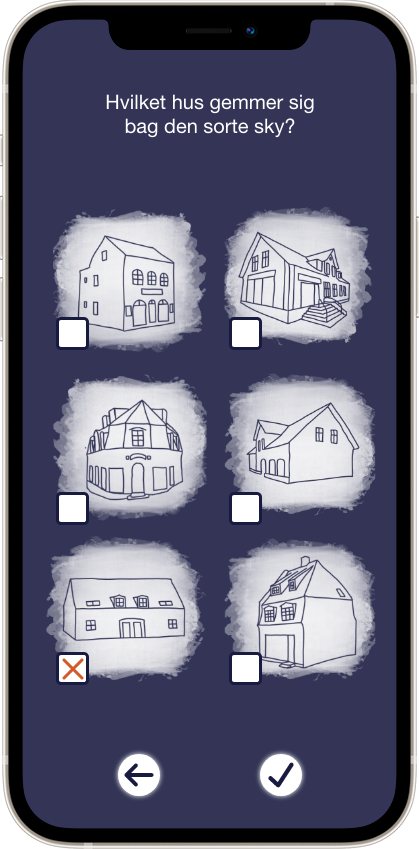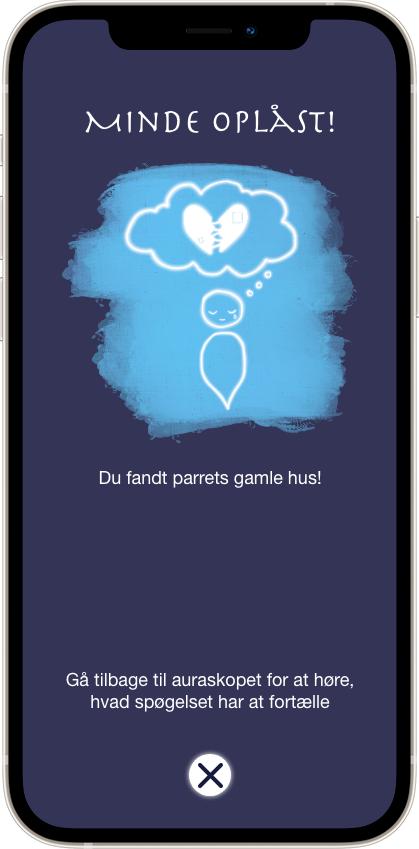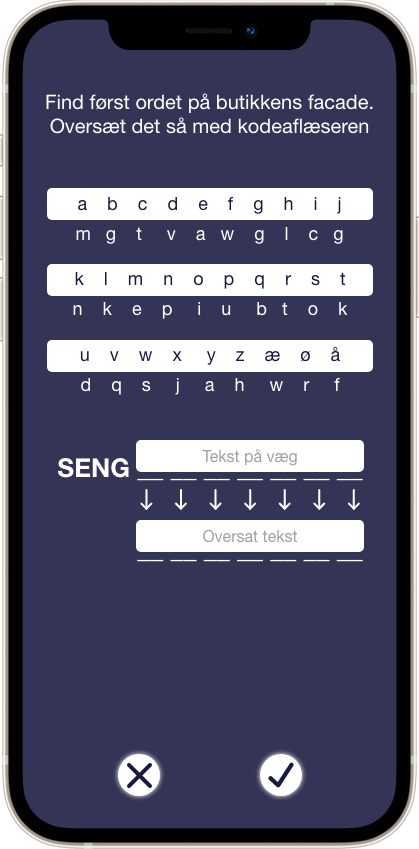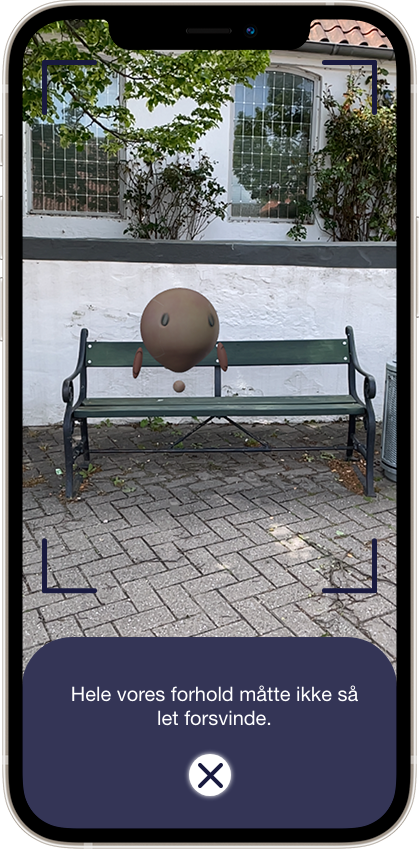TL;DR
I have designed a playful and engaging experience in a city setting, in two different materialities - analog and digital. The concept makes use of the urban space, and encourages people to go outside and play together.
Skills
Interaction Design
Play Design
Swift
UX & UI Design
AR
Team
Game designer: Oxana Jonsman
Supervisor: Miguel Sicart
Understanding the brief
What is a Puzzle Walk?
A Puzzle Walks is an outdoor puzzle game, which can best be described as a blend between an Escape Room and a Treasure Hunt. Thus, Puzzle Walks rely heavily on puzzles, storytelling, and the environment to tell the story through.
The main difference between an Escape Room and a Puzzle Walk, lies in the untamperable nature of the physical environment. In an Escape Room, the new props can be designed to fit into a story. In a Puzzle Walk, everything needs to be adjusted to fit the existing environment.
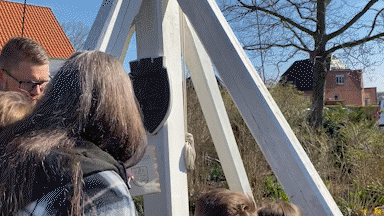
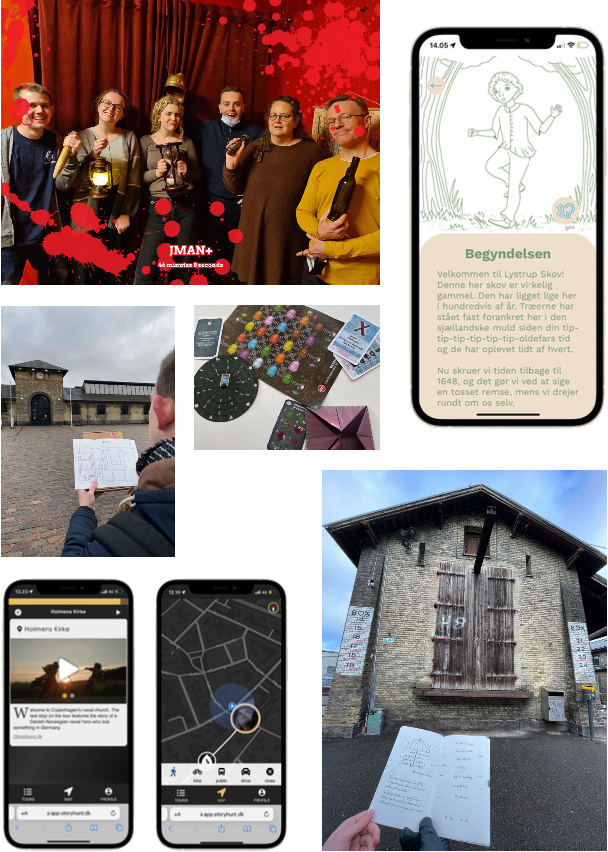
Researching the market
An untapped potential
Among the most important observations from our competitor analysis, we found that most of the Puzzle Walks were either a 100% analog or fully digital. Here, we saw that analog Puzzle Walks lacked the ability to keep track of progress, while the digital ones missed a sense of authencity, which, in our opinion, was inherent to the experience.
Cue our research question:
How can analog and digital materialities be employed to create a good Puzzle Walk experience?
Material-Driven Design
Our Approach
To answer our research question, we employed an iterative approach, where understanding the materials and their qualities, was a top priority. Therefore, we used a design methodology known as 'Material-Driven design' (MDD). This methodology shifts the starting point to the materials, rather than a desired set of functionalities or aesthetics.

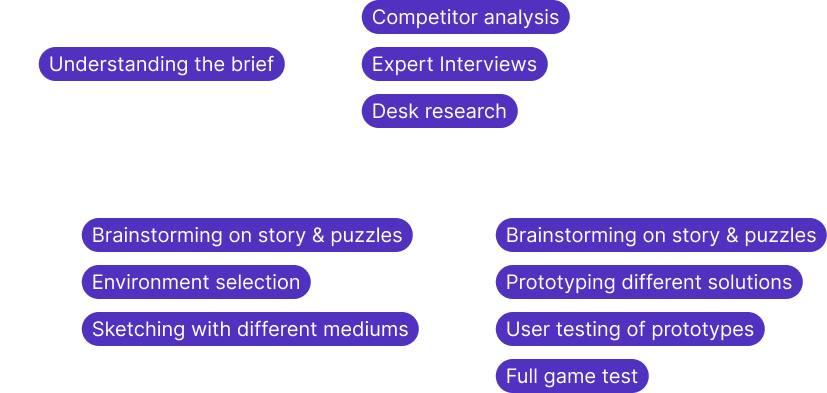
Digital Wayfinding
Experimenting with Software
Following the MDD method, we decided to experiment with ways to wayfind through an app (programmed in Swift/XCode). Rather than a simple GPS tool, we implemented a hot/cold system, to make wayfinding between the puzzles, part of the Puzzle Walk.
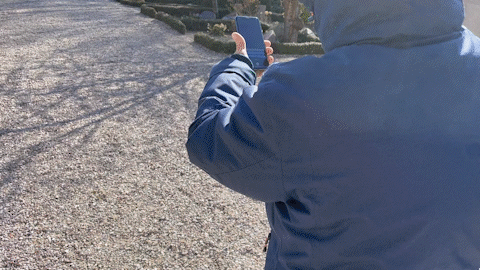
Understanding Paper's Qualities
Puzzle-crafting
In an effort to find the perfect mix between the digital and analog, we also needed to understand a paper's material qualities. To get a better understanding, we crafted a small puzzle, and asked to solve it.
The MANY ways our users tried to solve it, gave us a clear idea about the material possibilities.
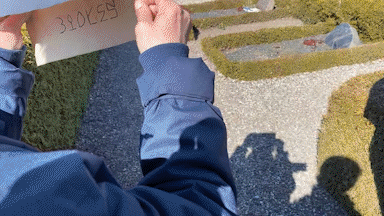
Insight:
A Puzzle Walk is not just a mix of digital and analog configurations - a Puzzle Walk materiality extends into the environment and the story as well. The intersection of story, puzzle and environment is what constitues a good Puzzle Walk.

Location Investigation
Situating the Story in the Environment
With a realisation of the story/puzzle/environment dependencies, we conducted a thorough location investigation, identifying any puzzle-friendly spot in the city. We then used a mix of local history and imagination to tie them all together. This served as the foundation for the development of our puzzles.
Result?
With an understanding of the story, puzzles and the environment as materialities in a Puzzle Walk, and by experimenting with different analog/digital mediums, we designed a Mixed-Reality experience.

